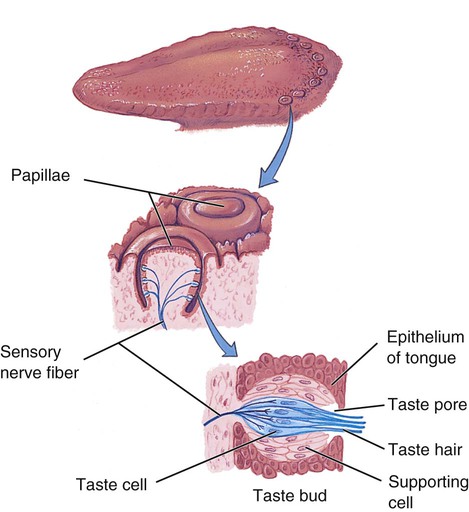1. Explain the difference between general senses and special senses, and state examples of each. 2. List and describe the five groups of sense receptors. 3. Identify the sense receptors for touch, pressure, proprioception, temperature, and pain. 4. List and identify the location of the four different taste sensations. 5. Locate the sense receptors for smell, and trace the impulse pathway to the cerebral cortex. 6. Describe the structure of the eye, and explain the function of each structure. 7. Explain how light is focused on the retina. 8. Explain the function of the following photoreceptor cells in the retina: rods and cones. 9. Explain how nerve impulses for sight are initiated in response to light. 10. Describe the structure of the ear, and explain the function of each structure. 11. Explain how nerve impulses for hearing are initiated in response to sound waves. 12. Explain the difference between static equilibrium and dynamic equilibrium. 13. Explain how impulses for static equilibrium and dynamic equilibrium are initiated. 14. Describe ways in which the aging of an individual affects the senses. Although there are many different kinds of sense receptors, they can be grouped into five types. The basis for these receptor types is the kind of stimulus to which they are sensitive or have a low threshold. The five types of receptors are chemoreceptors, mechanoreceptors, nociceptors, thermoreceptors, and photoreceptors (Table 10-1). Table 10-1 From Applegate E: The anatomy and physiology learning system, ed 4, St Louis, 2011, Saunders. 2. A receptor must detect the stimulus and create an action potential. 3. The action potential (impulse) must be conducted to the central nervous system (CNS). 4. Within the CNS, the impulse must be translated into information. 5. Information must be interpreted in the CNS into an awareness or perception of the stimulus. The organs of taste, the taste buds, are localized in the mouth region, primarily on the surface of the tongue, where they lie along the walls of projections called papillae (Figure 10-1). Within the taste bud, specialized epithelial cells called taste cells or gustatory cells are interspersed with supporting cells and nerve fibers (see Figure 10-1). The entire taste bud opens to the surface through a taste pore. Tiny taste hairs (microvilli) project from the taste cells through the taste pore, and it is these hairs on the taste cells that function as the receptors.
The Senses
Introduction to the Senses
Receptors and Sensations
Receptor
Stimulus
Example
Chemoreceptors
Changes in chemical concentration of substances
Taste and smell
Mechanoreceptors
Changes in pressure or movement in fluids
Proprioceptors in joints, receptors for hearing and equilibrium
Nociceptors
Tissue damage
Pain receptors
Thermoreceptors
Changes in temperature
Heat and cold
Photoreceptors
Light energy
Vision
Gustatory Sense
![]()
Stay updated, free articles. Join our Telegram channel

Full access? Get Clinical Tree


The Senses
Get Clinical Tree app for offline access


